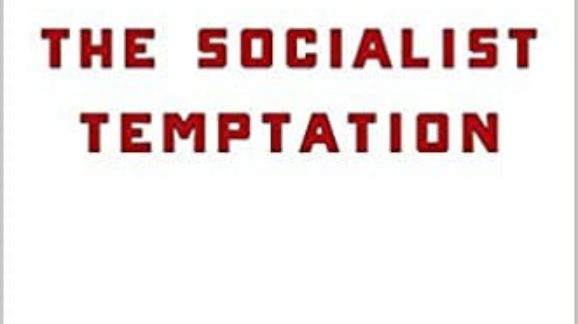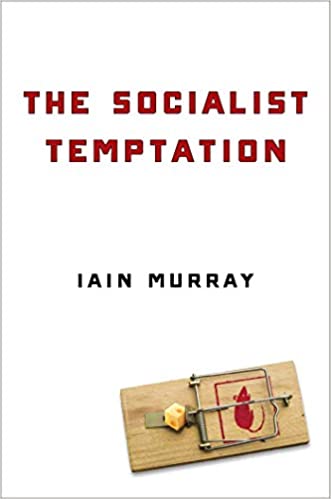America’s Cultural Revolution

 In my forthcoming book, The Socialist Temptation (available for preorder now), I talk about how socialism in China produced the Cultural Revolution. The text of the book was finalized before our current moment, so I was unable to draw parallels between what happened then and what appears to be happening now. Suffice it to say, I think we should be worried.
In my forthcoming book, The Socialist Temptation (available for preorder now), I talk about how socialism in China produced the Cultural Revolution. The text of the book was finalized before our current moment, so I was unable to draw parallels between what happened then and what appears to be happening now. Suffice it to say, I think we should be worried.
The cultural revolution was centered around an attack on “the Four Olds”—old customs, old culture, old habits, and old ideas. This came from an article that spread around China in various formats in between May and June 1966 (helpfully translated here at, of course, Marxists.org) entitled Sweep Away All Monsters. The author described a revolution already in progress when he said, “The proletarian cultural revolution is aimed not only at demolishing all the old ideology and culture and all the old customs and habits, which, fostered by the exploiting classes, have poisoned the minds of the people for thousands of years, but also at creating and fostering among the masses an entirely new ideology and culture and entirely new customs and habits—those of the proletariat.” The article celebrated “routing the bourgeois ‘specialists,’ ‘scholars,’ ‘authorities,’ and ‘venerable masters’ and sweeping every bit of their prestige into the dust.”
The creation of a truly socialist state, it was thought, required this process of sweeping away. Without loyalty to these old ideas, loyalty to the state, the party, and to Mao himself would unify the country.
Is it hyperbole to suggest that America is currently facing a similar attack? In at least one sense it is hyperbole—the cultural revolution killed many thousands, and thankfully so far, we have not seen that sort of large-scale violence. Yet, there is clearly something similar going on.
American culture, for instance, includes a shared sense of history and a shared agreement that certain people are to be admired. America has many different regional cultures, but most are in general agreement with each other; only one is different from the others. Owing to the need for reconciliation after the Civil War, America allowed two parallel cultures to develop—one for the defeated South and the other for the rest of the country. The development of a separate Southern culture accounts for arguments about “Southern Heritage,” the veneration of Confederate generals, and the Lost Cause mythology. This led to the problems of Jim Crow and racism. In my personal opinion, it is past time that the South properly integrated its culture with the rest of the United States and moved on. In that respect, attacks on this aspect of old culture are justifiable.
Yet, as we have seen, the attacks have not stopped with symbols of the Confederacy. Statues and symbols of the Founding Fathers have been targets for abuse, as have explorers like Christopher Columbus and missionaries like Junipero Serra. Anti-racists and abolitionists have not escaped. Nor even has allegory—the statue of “Forward,” representing progress and women’s rights was attacked in Madison, Wisconsin. What appears to be happening is an attack not just on the problematic culture of the old South, but on shared American culture itself. While there is a strong libertarian argument that the government has no business in setting up statues to promote cultural ideas, the attack goes beyond the role of government. The attacks are shorthand for “everything you believe is a lie.”
A parallel attack on habits and customs can be seen in the current move towards “antiracist” training and conditions in American corporate culture. Books like White Fragility are at the top of the bestseller lists at least partly because they have become prescribed reading for employees of major American companies. Yet, as reviews like John McWhorter’s at The Atlantic or Andrew Sullivan’s at New York magazine make clear, these books are not the stuff of business schools. They attack the reader’s or trainee’s habits and customary ways of thinking. No opposition or dissent is allowed. As McWhorter puts it, White Fragility has the reader “muzzled, straitjacketed, tied down, and chloroformed for good measure.”
If culture, habits, and customs are targets, what about ideology? For this, take a look at the Smithsonian’s National Museum of African American History and Culture and its “tool” for tackling racism. The tool says that white culture leads to white supremacy and to white nationalism. Among aspects of white culture are:
- Rugged individualism
- The Scientific method (“objective, rational linear thinking, cause and effect relationships, quantitative emphasis”)
- The Protestant work ethic
- Common law justice
- Competition
If you asked for an illustration of the building blocks of liberalism, chances are many of those would be on the list. Other items on the list relate to habits and customs. While free speech is not on the Smithsonian’s list, it is clearly an ideology under attack given the current debate around cancel culture. The current revolution isn’t just aimed at American traditions, but against American liberalism itself. One wonders what the African-American women scientists celebrated in Hidden Figures would make of the Smithsonian attacking the scientific method in this manner.
Yes, America is very far off from communism, but America’s current crisis is sufficiently similar to the Chinese cultural revolution that it should provide a warning. We must ask what will be put in place if the cultural revolution succeeds.
It seems likely that the preferred answer of those attacking America’s four olds is the imposition of something very close to socialism. While it is unlikely to be classic Marxist democratic socialism, with nationalized industries and central planning with production targets, the results will be pretty similar. Bureaucrats will tell individuals and companies what they can and cannot do. Government will provide reparations, a universal basic income, replace investors as the main source of business funding, and ban fossil fuels. “Woke” corporations will be the norm, be run under ESG principles, and act as government agents in policing speech, providing health care and welfare protections such as sick leave. Free trade will be constrained by the demands of labor unions and environmental activists. Every policy will be judged solely on the basis of whether or not it ostensibly promotes racial or environmental justice. The individual will be subjugated to the collective. All this will be paid for, as much as it can be, by expropriation of assets from unsympathetic “exploiters.”
This may sound attractive to some, and it may even seem to work for a while, but in the end socialism’s contradictions will cause its collapse. Socialism claims to be democratic, but it empowers bureaucrats. It claims to increase freedom, but is dependent on coercion. It is founded on an idea of unanimity, but explains away dissent as a product of “false consciousness.” And so on. These contradictions lead to the situation memorably described by British journalist Toby Young: “Socialism: starts with utopian vision of egalitarian future, ends with people eating their pets.”
If we are to prevent America descending to such straits, we need to find the win-win solution of the Overton Window. As I suggested above, certain parts of American culture aren’t worth keeping. The Confederacy needs to be consigned to the trashcan of history where it belongs. Certain aspects of police culture need to go too—its militarization and reliance on confrontation, for instance—but a lot of that can be achieved through reforms like ending the war on drugs (in general, any policy that begins “war on…” is likely to be terrible.) Yet we must defend America’s liberal culture, which includes the morality of capitalism, entrepreneurialism, and innovation—and dissent.
America has always been a country of three value groups—egalitarians, libertarians, and traditionalists. A cultural revolution that elevates radical egalitarianism over the other value groups will be a betrayal of American values. Yet that, it appears, is what the revolutionaries want.